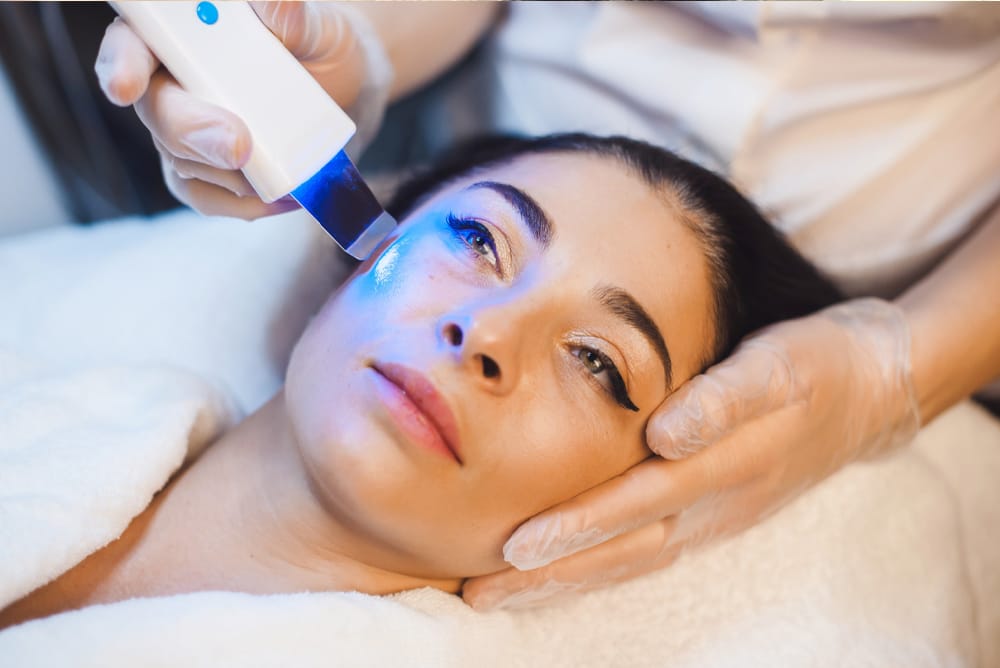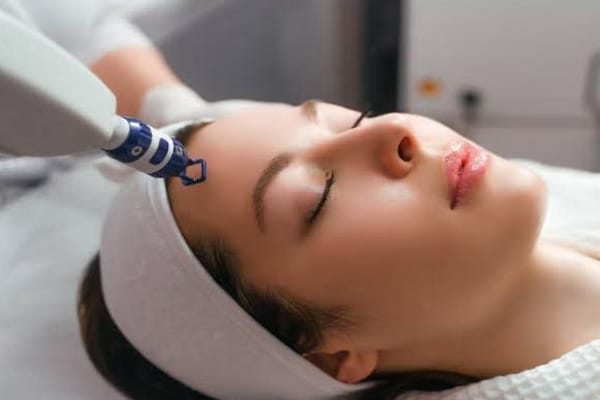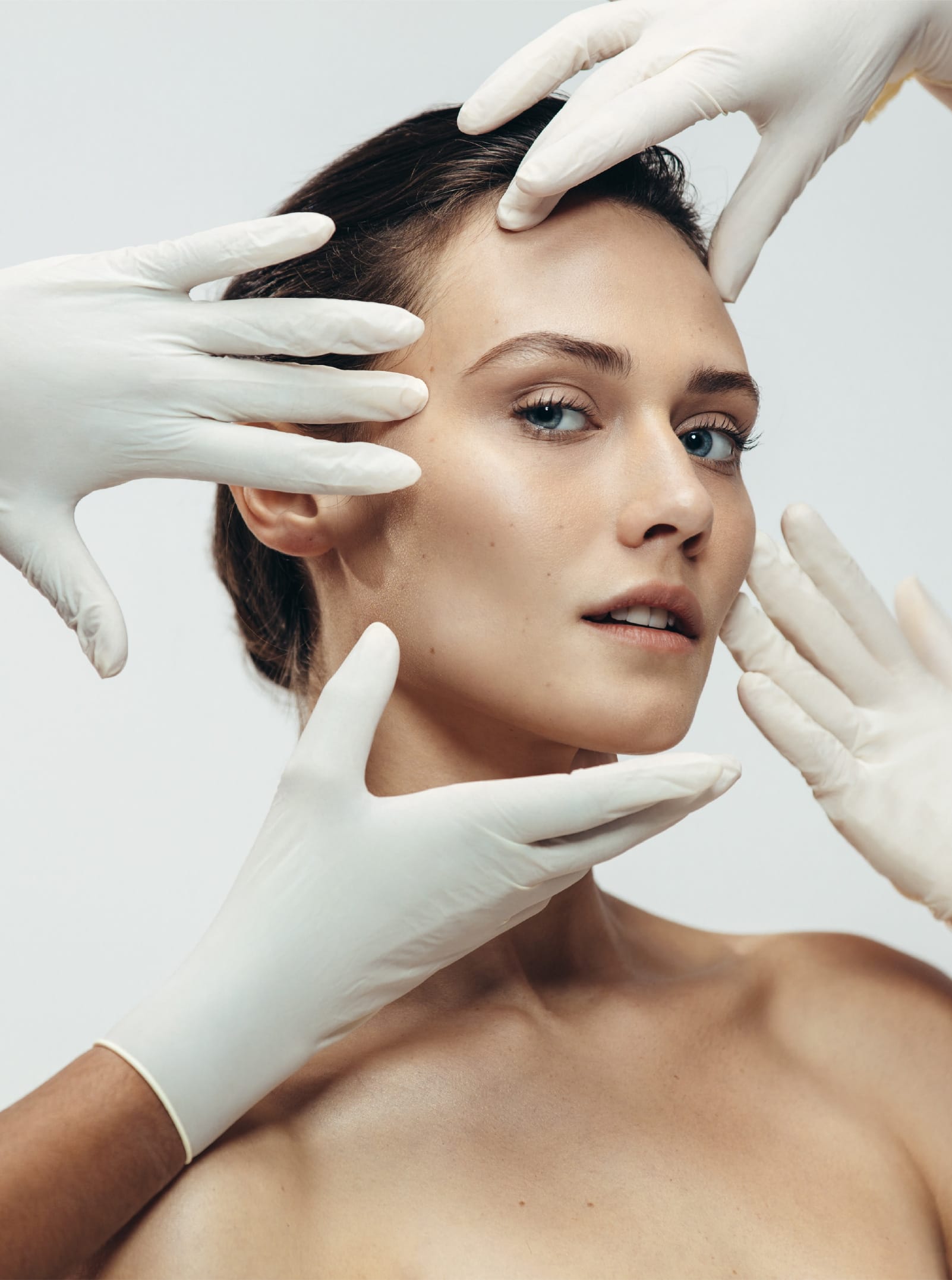LASER TREATMENTS
Lasers have become an important part of the dermatologist’s arsenal for the treatment of skin diseases. As such, familiarity with the usage and indications of this treatment modality has become important in the field of dermatology.

LASER HAIR REMOVAL
Laser hair removal is a popular non-invasive treatment available at Dr Naiya Bansal’s Skin and Laser Center and VN Clinics, Chandigarh and Mohali. This procedure uses concentrated light to target hair follicles, reducing hair growth effectively. The laser's beam is absorbed by the melanin in the hair, converting light into heat, which damages the follicle and inhibits future growth. This treatment is particularly effective on areas such as the face, legs, bikini line, and underarms, with the best results typically achieved after multiple sessions spaced 4 to 6 weeks apart.
While laser hair removal works best for those with darker hair and lighter skin tones, advancements have made it suitable for various skin types. Though not considered entirely permanent, it significantly reduces hair regrowth, leaving hair finer and lighter over time. Mild side effects like redness or swelling may occur but are temporary. Patients should avoid sun exposure post-treatment and follow aftercare guidelines to achieve optimal results at Dr Naiya Bansal’s Skin and Laser Center and VN Clinics, Chandigarh and Mohali.
LASER PHOTOFACIAL/ LASER TONING
A photo facial means a facial done with light. It’s the most modern cosmetic procedure wherein pulses of intense light are used to rejuvenate and refresh the skin, giving that nice glow, radiance, and refreshment to your dull, blotchy, and tired skin. It’s a 30-minute procedure in which intense pulses of light are used to penetrate deep into the skin. This photo-rejuvenation then causes collagen and blood vessels below the epidermis to constrict, reducing redness and age lines. The procedure involves minimal or no discomfort, while the redness and swelling that sometimes occur after treatment disappear very shortly.
Most benefits of a photo facial occur gradually in the weeks following treatment but few patients notice even an immediate fresh radiant skin which lasts for 1 or 2 weeks which makes it an ideal procedure to be taken right before any important occasion like a wedding or a party


LASER TATTOO REMOVAL
A special type of laser called a Q-switched Nd: YAG which releases energy in a single, powerful pulse is the treatment of choice for tattoo removal. Laser tattoo removal is safe and effective, and it only takes few minutes to perform.
When tattoos are applied, ink particles are inserted with a needle into varying depths of skin where it gets trapped. Laser treatment causes tattoo pigment particles to heat up and fragment into smaller pieces. These smaller pieces are then removed by normal body processes.
At Dr Naiya Bansal’s Skin and Laser Center and VN Clinics, Chandigarh and Mohali, we provide the best laser tattoo removal service. Your tattoo will become progressively lighter after every visit using the best and the most modern method available in the practice. It's a painless, efficient, safe, effective, and very economical modality to get rid of your unwanted tattoos.
LASER BIRTHMARK REMOVAL
Birthmarks are rather curious features, given that no one knows why we have them. Some birthmarks can be hereditary, while others simply appear in one of two ways. The first kind happens as a result of the sudden growth of pigment cells in one area, called pigmented birthmarks, or from irregular blood vessels that crowd together beneath the skin, known as vascular birthmarks.
Pigmented: Birthmarks caused by excess pigment cells, as exemplified by :
- Moles: Small spots on the skin, often brown in color, sometimes raised.
- Naevus of ota: Its rather a more common form of pigmented birthmark which is strictly unilateral and is often bluish black in colour.
- Becker’s naevus: Its again a pigmented birthmark , which usually appears later in life and appears dark brown or blackish in colour, mostly exhibiting excessive hair growth also over its surface


LASER ACNE SCAR/ BURN SCAR/ SCAR REMOVAL
Laser treatments are best suited for the removal of stretch marks by reducing their appearance and decreasing pain or itchiness. A variety of lasers with different wavelengths are used to remove the marks and affect the skin in various ways. A fractional carbon dioxide laser resurfacing treatment is the best method available for stretch marks and old burn or post-traumatic scars which helps in collagen remodelling and gradually helps to improve the tone, texture, and appearance of the scar tissue.
At Dr Naiya Bansal’s Skin and Laser Center and VN Clinics, Chandigarh and Mohali. We offer the latest fractional laser and micro-needling radiofrequency treatment to reduce the prominence of any kind of scar mark on your body without any side effects or much downtime.
LASER MOLE/ TAG/ WART REMOVAL
For the removal of moles from the body, layered laser ablation is the most effective treatment, which is available now at Dr Naiya Bansal’s Skin and Laser Center and VN Clinics, Chandigarh and Mohali. It is the most advanced and modern procedure that helps in the removal of unwanted moles and growths on the skin without any pain or scarring. Our trained doctors directly apply the laser beam to the cells that form the mole. The mole absorbs the laser beam and fumes away from the skin surface, without affecting the surrounding skin. It is the most popular treatment for the mole as there is no cutting and it can be used to remove a mole from any part of the body.


LASER VAGINAL REJUVENATION
Laser treatments are best suited for the removal of stretch marks by reducing their appearance and decreasing pain or itchiness. A variety of lasers with different wavelengths are used to remove the marks and affect the skin in various ways. A fractional carbon dioxide laser resurfacing treatment is the best method available for stretch marks and old burn or post-traumatic scars which helps in collagen remodelling and gradually helps to improve the tone, texture, and appearance of the scar tissue.
At Dr. Naiya Bansal’s Clinic. We offer the latest fractional laser and micro-needling radiofrequency treatment to reduce the prominence of any kind of scar mark on your body without any side effects or much downtime.

Age Backwards...
If you wish to improve the health and appearance of your skin,
you have many excellent options today.
Book an Appointment

